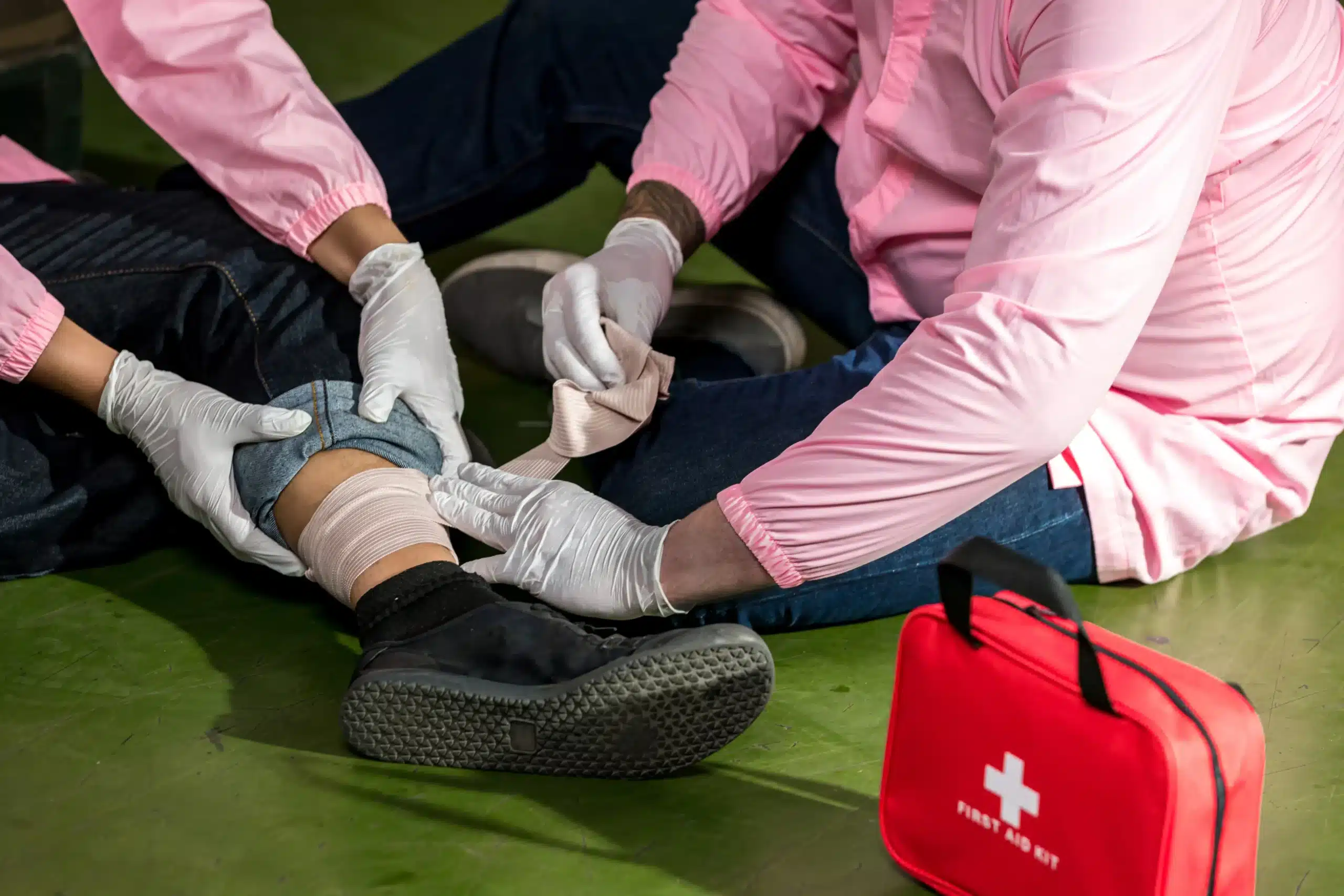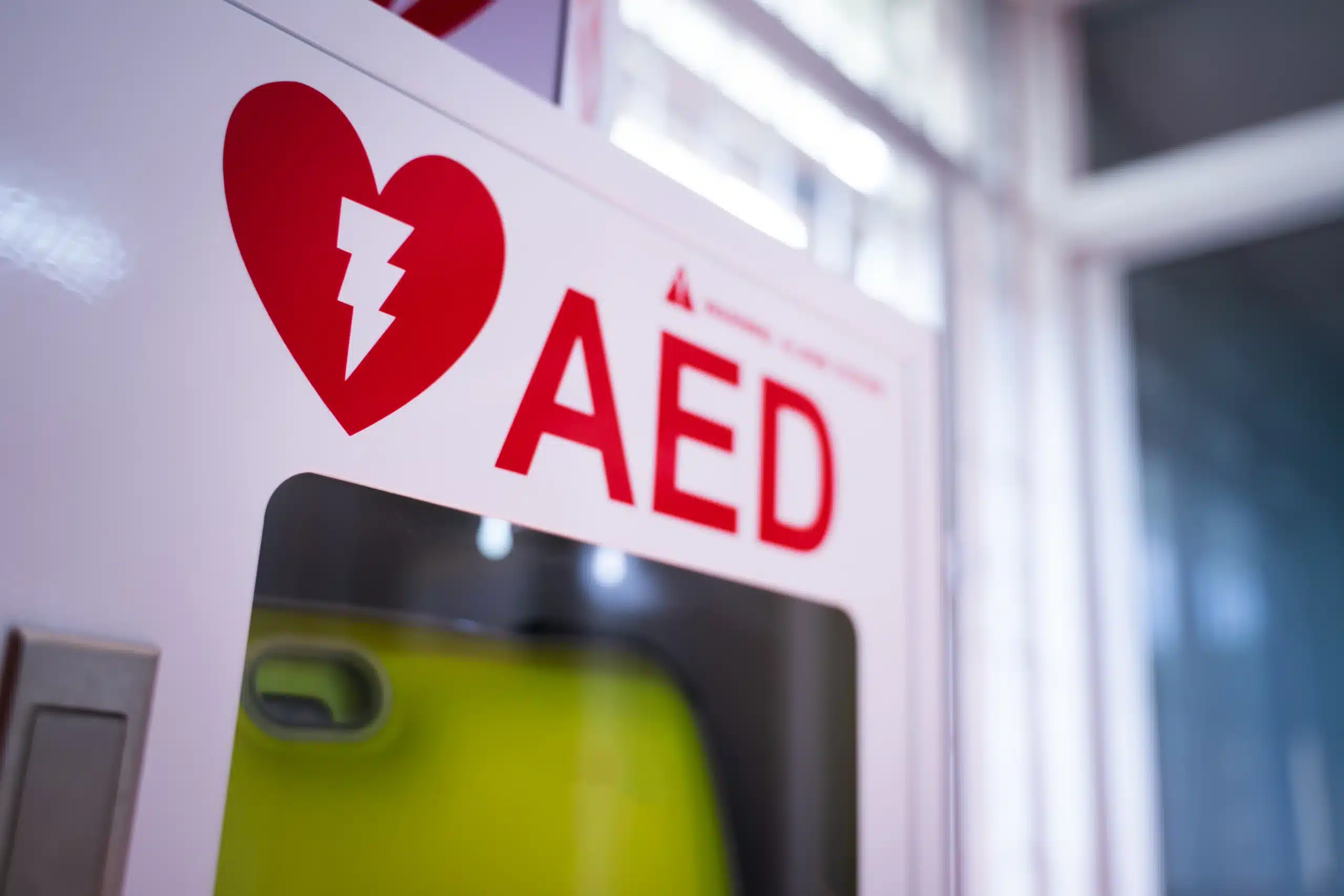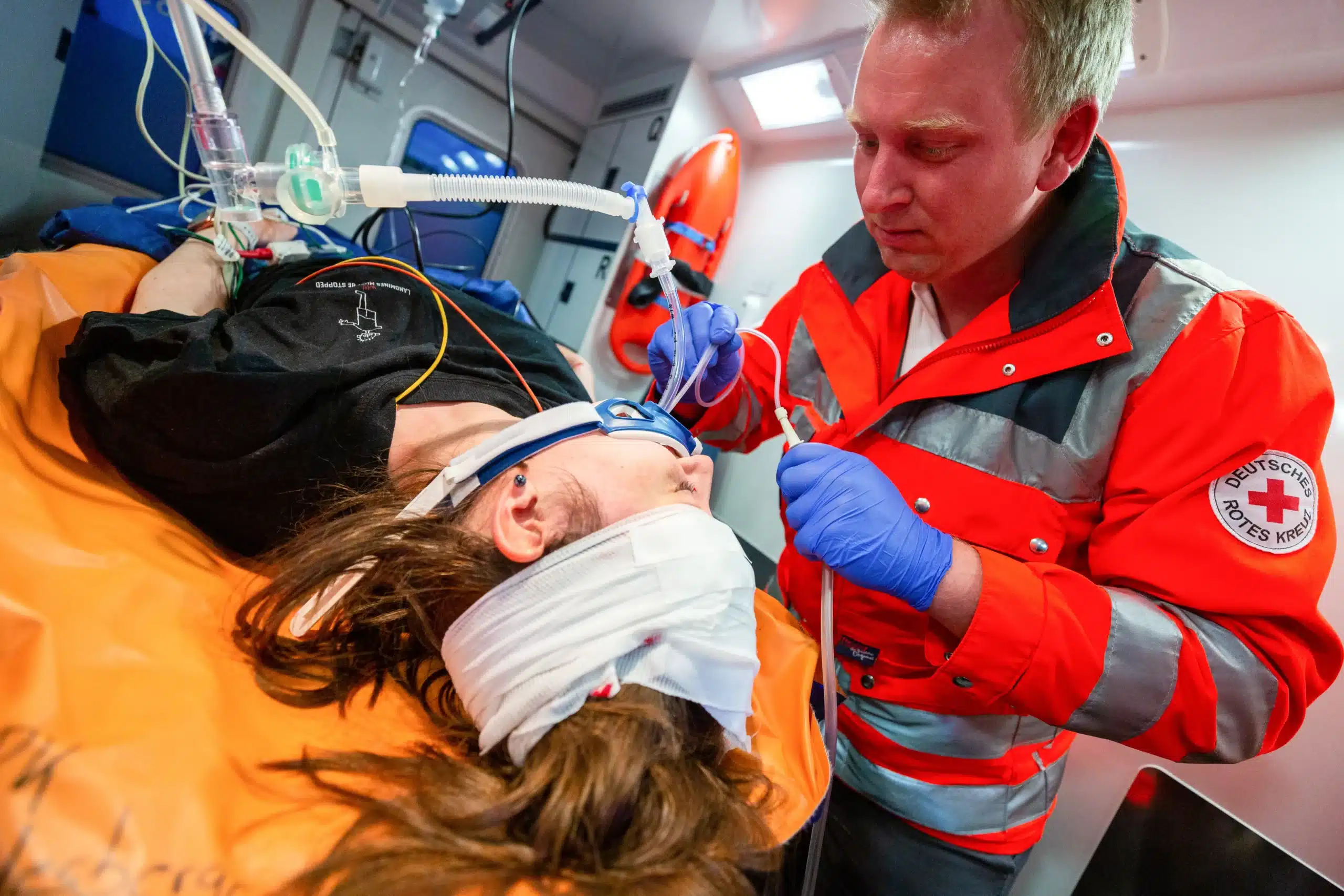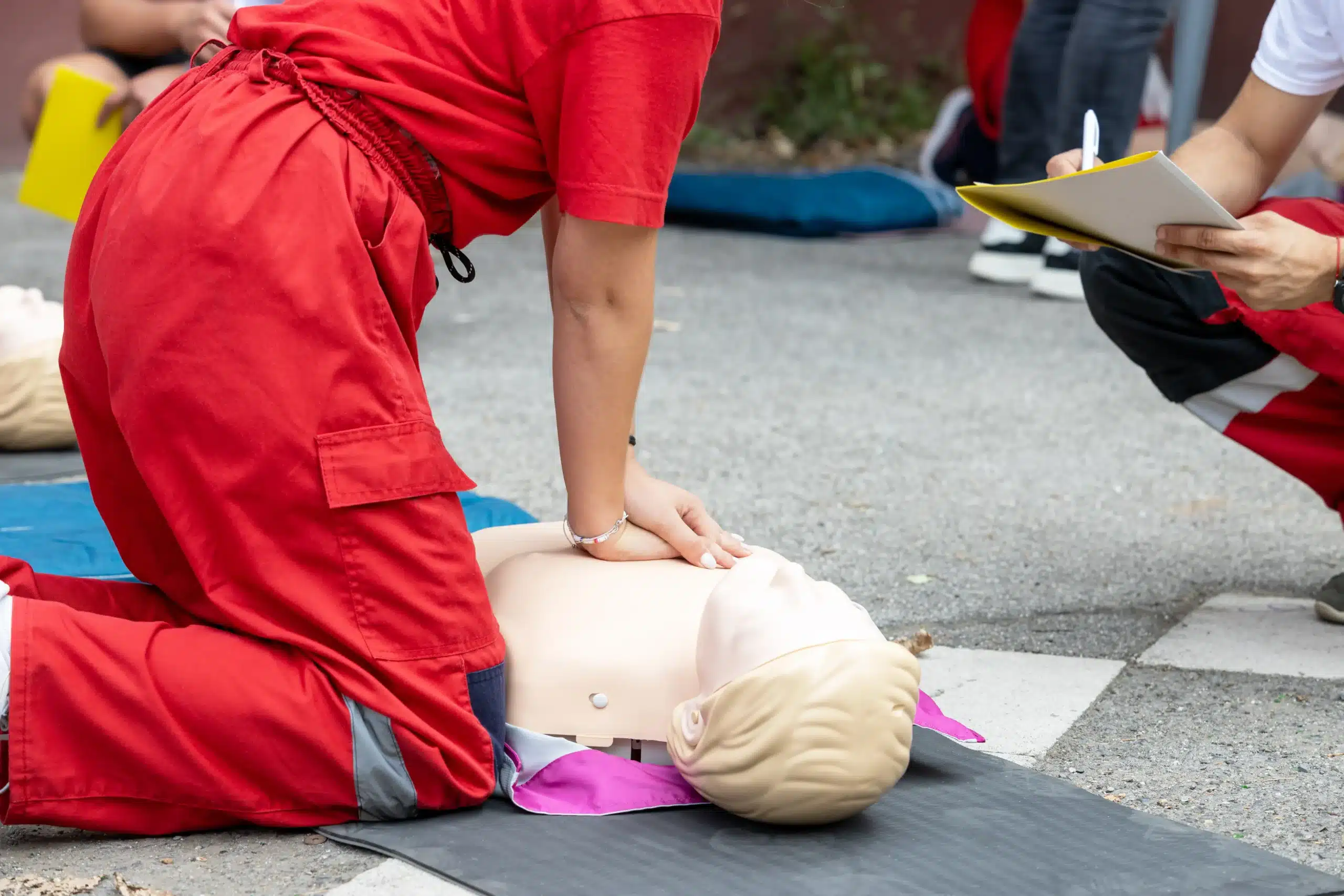Juggling work, life, and continuing education can feel like a never-ending balancing act, especially in the demanding field of healthcare. Finding the time for essential training like Pediatric Advanced Life Support (PALS) can be a real challenge. That’s why HeartCode PALS offers a game-changing solution. This blended learning program combines the flexibility of online learning with the crucial hands-on practice needed to master life-saving skills. This post breaks down everything you need to know about HeartCode PALS, from course content and structure to cost, certification, and how it can significantly impact your career. We’ll also explore how this innovative approach addresses common challenges healthcare professionals face when pursuing further education.
Key Takeaways
- HeartCode PALS fits your busy schedule: The blended learning format lets you complete online modules at your own pace, then demonstrate your skills in a hands-on session.
- Gain practical skills for pediatric emergencies: The course uses realistic simulations and emphasizes teamwork, building your confidence and competence in critical situations.
- Advance your healthcare career: PALS certification enhances your professional credentials, potentially opening new opportunities and demonstrating your commitment to providing high-quality pediatric care.
What is HeartCode PALS?
HeartCode PALS is the American Heart Association’s blended learning course for Pediatric Advanced Life Support. It combines online learning with a hands-on skills session. This flexible format lets you learn the course material at your own pace, then demonstrate your skills in person. The online portion uses interactive lessons, case studies, and simulations to prepare you for real-world scenarios. You’ll find this format convenient if you need to fit training around a busy schedule. For more information about the program, visit the AHA’s PALS Course Options page.
Who should take it and why?
This course is designed for healthcare providers who respond to emergencies involving infants and children. This includes personnel in emergency response, emergency medicine, intensive care, and critical care units. Physicians, nurses, paramedics, and other professionals who need PALS certification will find this course beneficial. If you’re looking for a convenient way to get your initial PALS certification or recertify, HeartCode PALS offers a valuable alternative to traditional classroom courses. The Children’s Hospital of Philadelphia offers a helpful overview of the PALS Heartcode Course.
Key features
HeartCode PALS uses adaptive learning technology, which means the program adjusts to your learning style and pace. It presents you with the most relevant information based on your answers and confidence levels. This personalized approach helps you focus on the areas where you need the most practice. The hands-on skills session typically takes about five hours, including breaks. During this session, you’ll work with an AHA instructor to practice essential skills and techniques.
Adaptive learning
The online portion of the HeartCode PALS course varies in length depending on your experience. If you’re already familiar with some of the material, you’ll likely move through it quickly. The program uses a series of videos and simulated pediatric emergencies to reinforce key concepts. This method helps you develop a systematic approach to pediatric emergencies, building your confidence and competence. You’ll learn through realistic scenarios, making it easier to apply your knowledge in real-life situations. For a deeper dive into the blended learning format, check out this comprehensive guide.
Understand the HeartCode PALS Structure and Format
HeartCode PALS uses a blended learning approach, combining online coursework with in-person skills practice. This flexible format accommodates various learning styles and schedules. Let’s break down each component:
Learn online
The HeartCode PALS course begins with a self-directed, online component. This web-based program allows you to learn essential pediatric life support knowledge and skills at your own pace. You’ll work through interactive lessons, case studies, and knowledge checks, building a strong foundation before practicing your skills. This online portion offers the flexibility to study whenever and wherever it suits you best. For more details, the Children’s Hospital of Philadelphia offers information on their PALS Heartcode Course.
Practice hands-on skills
After completing the online modules, you’ll move on to the crucial hands-on skills session. This in-person component allows you to apply the knowledge you’ve gained in a realistic setting. You’ll work with an American Heart Association (AHA) instructor and practice essential skills like CPR, airway management, and vascular access. This part is essential for mastering the techniques and receiving your PALS certification. A.C.T.N.T. Healthcare Services emphasizes the importance of this in-person training in their PALS course description.
Blended learning advantages
The blended learning format of HeartCode PALS offers several advantages. It combines the convenience and flexibility of online learning with the practical application of in-person skills practice. You can learn the material at your own speed online and then demonstrate your competence in a hands-on environment. This approach caters to different learning preferences and busy schedules. Bay Area CPR discusses the benefits of this blended learning style in their PALS HeartCode guide.
Realistic simulations and eSimulation
HeartCode PALS incorporates realistic simulations using eSimulation technology. These virtual scenarios allow you to practice your skills in a safe and controlled environment. You’ll encounter various pediatric emergencies and make critical decisions, receiving immediate feedback and coaching after each simulation. This interactive approach helps you build confidence and refine your skills before applying them in real-world situations. Your CPR MD provides further information on their HeartCode PALS page.
Focus on teamwork and communication
Effective teamwork and communication are crucial in pediatric emergency situations. The PALS Provider Course emphasizes these skills, preparing healthcare providers to work collaboratively and efficiently. You’ll learn how to effectively communicate within a team, delegate tasks, and coordinate care to improve patient outcomes. The American Heart Association highlights the importance of these skills in their PALS Course Options overview. This focus on teamwork and communication prepares you to provide the best possible care during critical situations.
Costs, Value, and Certification
Investing in your Pediatric Advanced Life Support (PALS) certification is an investment in your career and the lives of your young patients. Let’s break down the costs, the value you receive, and what the certification process entails.
Course Pricing and Discounts
The HeartCode® PALS online portion costs $168.00. This covers the online learning materials and adaptive learning technology. Remember, HeartCode PALS is a blended learning program, meaning it combines online learning with a required in-person skills session. This hands-on portion is sold separately and covers the practical application of the skills you learn online. Contact us at Safety Training Seminars for pricing on the skills session and to register for your PALS certification. We offer the lowest prices in Sacramento County with our low price guarantee. If you’re looking to certify a larger group, we also offer volume discounts for bulk purchases, making it even more cost-effective to train your entire team. Reach out to us to discuss options for groups of 50 or more.
Return on Investment
Think of the HeartCode® PALS course as more than just a cost—it’s an investment in your professional development. The course uses adaptive learning technology, which personalizes your learning experience. The program adjusts to your pace and skill level, making the training efficient and highly effective. This personalized approach means you focus on the areas where you need the most practice, maximizing your learning and making your investment worthwhile. For healthcare providers who regularly face pediatric emergencies, this targeted training translates to improved confidence and better patient outcomes.
Prerequisites
Before you begin the HeartCode® PALS course, we recommend having a current Basic Life Support (BLS) certification. While not strictly required, a solid foundation in BLS principles is essential for understanding the more advanced concepts in PALS. Familiarity with ECG rhythms and pediatric pharmacology will also be beneficial, allowing you to grasp the course material more comprehensively.
Certification and eCard
Once you successfully complete both the online portion and the required in-person skills session at our Sacramento location, you’ll receive your American Heart Association (AHA) PALS Provider eCard. This certification is valid for two years. The digital format makes it easy to access and share your credentials, ensuring you’re always prepared.
Validity and Renewal
Your PALS certification is valid for two years, keeping you current with the latest guidelines in pediatric advanced life support. When it’s time to renew, you’ll repeat both the online portion and the in-person skills check. This ensures your skills remain sharp and you’re up-to-date with any changes in protocols. We make recertification easy and convenient, so you can maintain your qualifications without hassle.
Overcome HeartCode PALS Challenges
Let’s be honest: adding another certification to your to-do list can feel daunting. But HeartCode PALS is designed with flexibility in mind. Here’s how to address some common challenges:
Manage your time
HeartCode PALS blends online learning with hands-on practice. This flexible approach lets you learn at your own pace and then demonstrate your skills in person. Instead of blocking out an entire day or weekend, you can integrate the online modules into your schedule, bit by bit. This makes the course manageable even for busy healthcare professionals. Fairfield CPR provides a helpful guide to PALS HeartCode certification that emphasizes this flexible learning approach.
Solve technical issues
While the online portion of HeartCode PALS is generally smooth, technical glitches can occasionally happen. If you encounter any problems, don’t panic. Reach out to your course provider’s technical support team—they are there to assist you. Code One offers bundled packages that streamline the skills check portion for BLS, ACLS, and PALS, minimizing the need for multiple appointments.
Retain your skills
The knowledge and skills you gain in PALS are crucial for positive patient outcomes. To truly retain this information, active recall is key. After completing the course, review the materials periodically. Consider joining online communities or forums to discuss cases and refresh your understanding of the protocols. PULSE CPR emphasizes the importance of high-quality individual skills for effective intervention in pediatric emergencies. This focus on practical application will help solidify your learning.
Accessibility
The adaptive learning format of HeartCode PALS caters to different learning styles and experience levels. The American Heart Association’s website details the various PALS course options and explains how the adaptive learning format tailors the online portion to each student. This means that whether you’re a seasoned healthcare provider or newer to the field, the course adjusts to your needs.
Support resources
Remember, you’re not alone on this journey. HeartCode PALS offers various support resources to help you succeed. From online tutorials and practice scenarios to instructor support and peer-to-peer learning opportunities, there are multiple avenues for assistance. Children’s Health offers a helpful overview of the blended learning approach used in HeartCode PALS. Take advantage of these resources to maximize your learning experience and build your confidence.
How HeartCode PALS Impacts Healthcare Professionals
HeartCode PALS offers several key benefits for healthcare professionals, directly impacting patient care and career growth. Let’s explore some of these advantages:
Enhance your pediatric care skills
The PALS HeartCode course provides healthcare providers with the essential knowledge and skills to manage pediatric emergencies effectively. Through interactive modules and realistic simulations, you’ll learn to recognize and respond to life-threatening situations in infants and children. This specialized training emphasizes early intervention and high-quality individual skills, ultimately leading to improved patient outcomes. The PALS Heartcode course offers valuable training for any healthcare provider working with young patients.
Advance your career
The HeartCode PALS certification, a recognized credential from the American Heart Association, demonstrates a commitment to advanced pediatric care. Including this certification on your resume strengthens your professional profile and may create new career opportunities. Many employers value the specialized training PALS certification represents. This certification guide offers helpful information about the program.
Earn continuing education credits
HeartCode PALS frequently offers continuing education credits (CME/CEU) for various healthcare professions, such as physicians, nurses, and pharmacists. These credits contribute to professional development and help maintain licensure. The number of credits offered may vary based on your profession. You can find more details about HeartCode PALS training and continuing education credits on this site.
Improve critical situation response
PALS training emphasizes effective teamwork and communication, essential for managing pediatric emergencies. The course prepares you to collaborate with other healthcare providers, ensuring coordinated and efficient responses in critical situations. This focus on team dynamics and high-performance skills translates to improved patient care and outcomes. PALS courses help healthcare providers recognize and intervene effectively in pediatric emergencies.
Enroll in HeartCode PALS: Next Steps
So, you’re ready to enhance your pediatric advanced life support skills? Great! This section walks you through enrolling in a HeartCode PALS course and making the most of your learning experience.
Register for the course
The HeartCode PALS course blends online coursework with a hands-on skills session. This flexible approach allows you to learn at your own pace and demonstrate your skills in person. Contact your local AHA Training Center, like Sacramento CPR Certification, to register for the HeartCode PALS course and schedule your skills session. They offer various certification courses, including BLS, ACLS, and PALS.
Prepare for the course
Once registered, you’ll access the online portion of the HeartCode PALS course. After completing the online modules, take the course survey and print your certificate of completion. Bring this printed certificate to your hands-on skills session as proof of completion. Many training centers require this for course entry. You can also explore other relevant courses like EMSA Child Care Health & Safety and RQI classes.
Maximize your learning
HeartCode PALS uses adaptive learning technology to personalize your learning path. The program adjusts to your performance and confidence level, focusing on areas where you need more practice. As you work through the online modules, provide honest feedback about your understanding. This helps the program tailor the content and challenges to your needs. Sacramento CPR Certification offers a low price guarantee on their courses.
Additional resources
The PALS Provider Course aims to improve outcomes for pediatric patients. It prepares healthcare providers to recognize and intervene in respiratory emergencies, shock, and cardiopulmonary arrest. The course emphasizes teamwork and individual skills crucial for positive patient outcomes. For more information on PALS courses and resources, visit the American Heart Association website. They offer various resources and information on PALS certification.
Related Articles
- ACLS HeartCode Sacramento: Your Certification Guide – Sacramento CPR Classes
- Pediatric Advanced Life Support (PALS) in Sacramento – Sacramento CPR Classes
- Online CPR Classes in Sacramento: Your Complete Guide – Sacramento CPR Classes
- Online PALS Classes in Sacramento: Your Guide – Sacramento CPR Classes
- HeartCode BLS Sacramento: Your Certification Guide – Sacramento CPR Classes
Frequently Asked Questions
What is the difference between HeartCode PALS and a traditional PALS course?
HeartCode PALS blends online learning with a hands-on skills session, offering flexibility. You learn the course material at your own pace online, then demonstrate your skills in person with an AHA Instructor. A traditional PALS course involves in-person classroom learning and skills practice all at once.
How long does it take to complete the HeartCode PALS course?
The online portion varies depending on your existing knowledge and how quickly you move through the material. The in-person skills session typically takes around five hours, including breaks.
What if I have technical problems with the online portion of HeartCode PALS?
Contact your course provider’s technical support team. They can help troubleshoot any issues you encounter and ensure you can complete the online modules.
Do I need any prior certifications or experience before taking HeartCode PALS?
A current BLS certification is recommended, though not strictly required. Familiarity with ECG rhythms and pediatric pharmacology is also helpful.
How much does the HeartCode PALS course cost, and what does it include?
The HeartCode PALS online portion costs $168.00. This covers the online materials and adaptive learning technology. The in-person skills session is an additional cost. Contact Safety Training Seminars for pricing and to register. We offer the lowest prices in Sacramento County with our low price guarantee.






